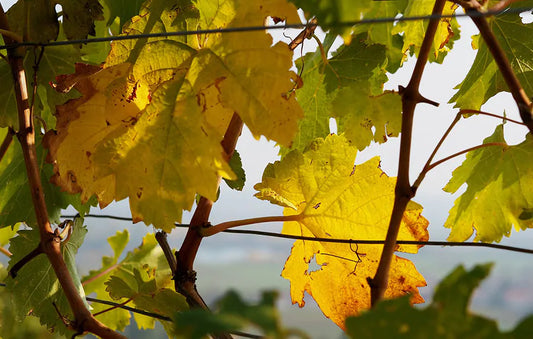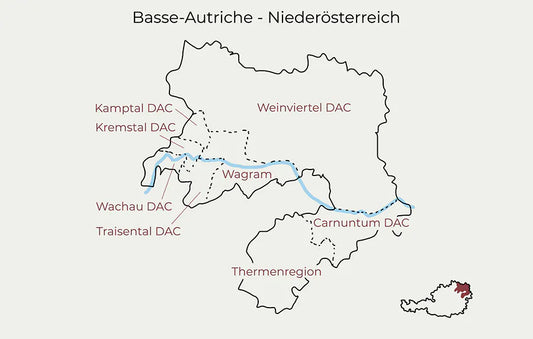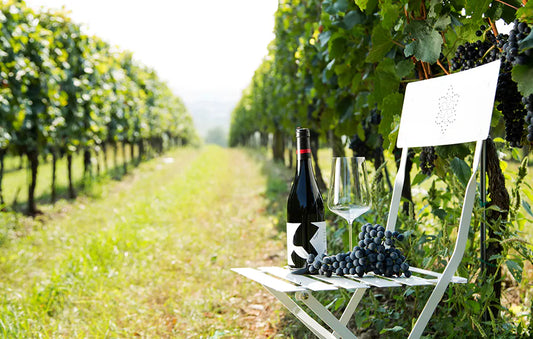Lower Austria


The cool continental climate means that winters are harsh and summers very hot. The region is influenced by cold winds coming from the north and from the Alps to the west. The Danube, crossing the length and breadth of Lower Austria, moderates temperature differences, making conditions more lenient in the regions of Wachau, Kremstal, Traisental, Wagram and Carnuntum (see “The eight regions of Lower Austria” above -below).
Geology enthusiasts will be fascinated by the diversity of soils found in Lower Austria: granite, gneiss, loess, limestone and schist to name just a few. The terrain is often steep and sloping, and it is therefore necessary to organize the vineyards into terraces, held in place by picturesque stone walls, where the work is entirely manual. It is in these conditions, sometimes inhospitable, that the emblematic grape varieties of the region: Grüner Veltliner and Riesling for the white grape varieties, and Zweigelt , Blaufränkisch and St. Laurent for the black grape varieties.

Lower Austria is divided into eight wine regions, some of which are categorized as “Districtus Austriae Controllatus” or “DAC”. The term DAC designates the Austrian classification certifying the typicality in relation to the local terroir of wines made from specific grape varieties. To the west, along the Danube, Kamptal DAC, Kremstal DAC, Wachau DAC (DAC since 2020), Traisental DAC and Wagram. In the center, the Weinviertel DAC region, alone producing more than a third of Austria's wines. Finally, to the southeast, Carnuntum DAC and Thermenregion DAC. It is difficult to succinctly present the specific characteristics of these regions, as the types of soil and mesoclimates are so different within each of them.

It was in the Carnuntum region that Weingut Glatzer was established in 1987, a family estate created by Walter Glatzer. Its wines, made from local grape varieties, are among the best value for money in the country. From 4.5 ha when it was created, the estate now operates 54 ha of vines. He produces sincere wines, reflecting with simplicity and precision their original terroir, like the "Dornenvogel" Grüner Veltliner vintage, with aromas of exotic fruits and pepper.
Although Grüner Veltliner is the most widely planted grape variety in the region, it is the “Dornenvogel” Zweigelt vintage that has made the estate's reputation. A wine with an intense color, with aromas of black cherries and blueberries. Its notes of fresh fruit are highlighted by a touch of spices, due to 12 months of aging in oak barrels, 30% of which is new wood.
The "Ried Bärnreiser" Blaufränkisch cuvée has all the makings of a great wine for aging: intense aromas of blackcurrant and blackberry, a firm structure, remarkable length and complex notes of bitter chocolate brought by 16 months of aging in barrels of oak, 50% of which is new. It is the same for the vintage “Ried Altenberg - Vieilles Vignes St-Laurent”, where elegance combines with the intensity of the aromas of roasting and black fruits, for a wine in complete harmony.
